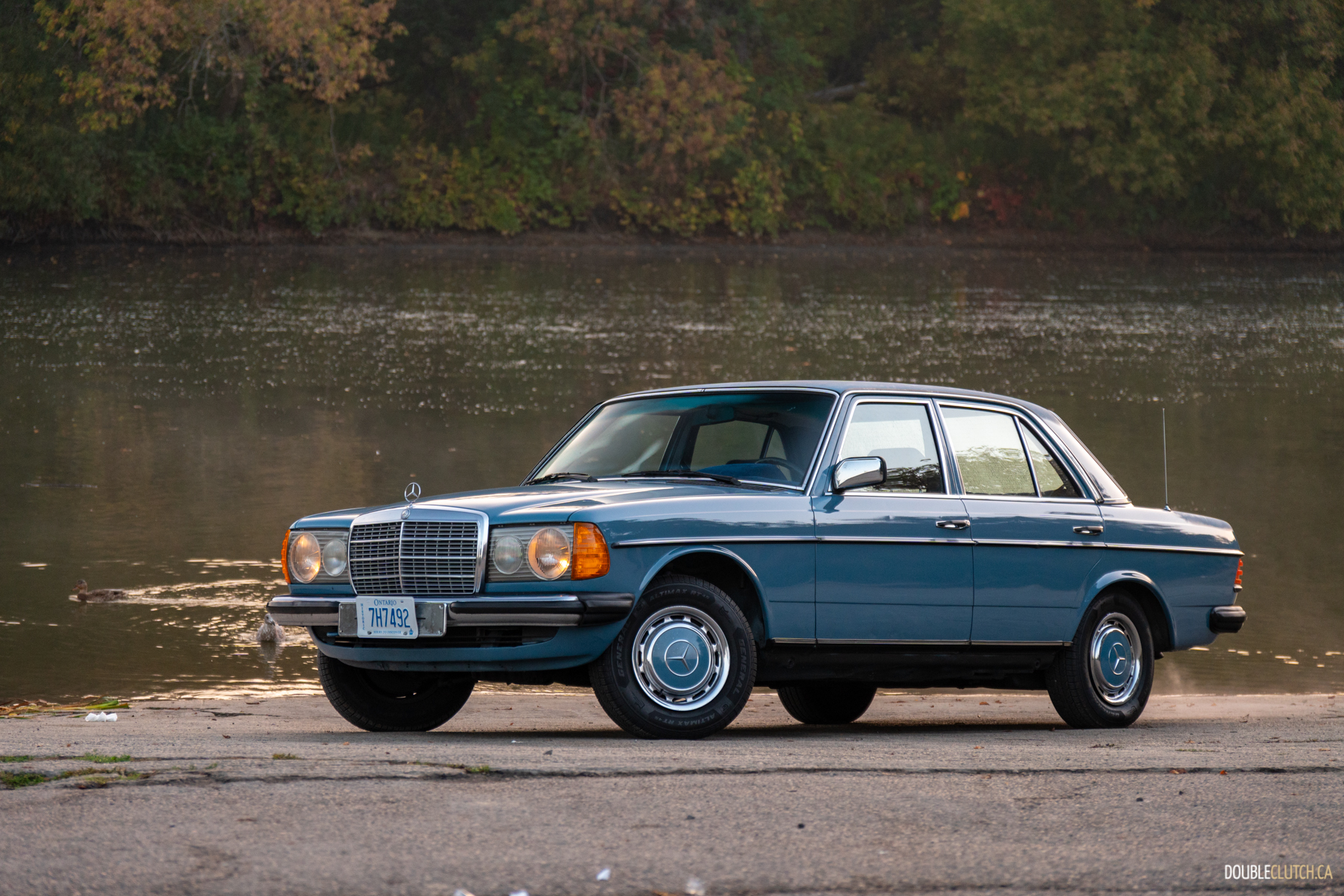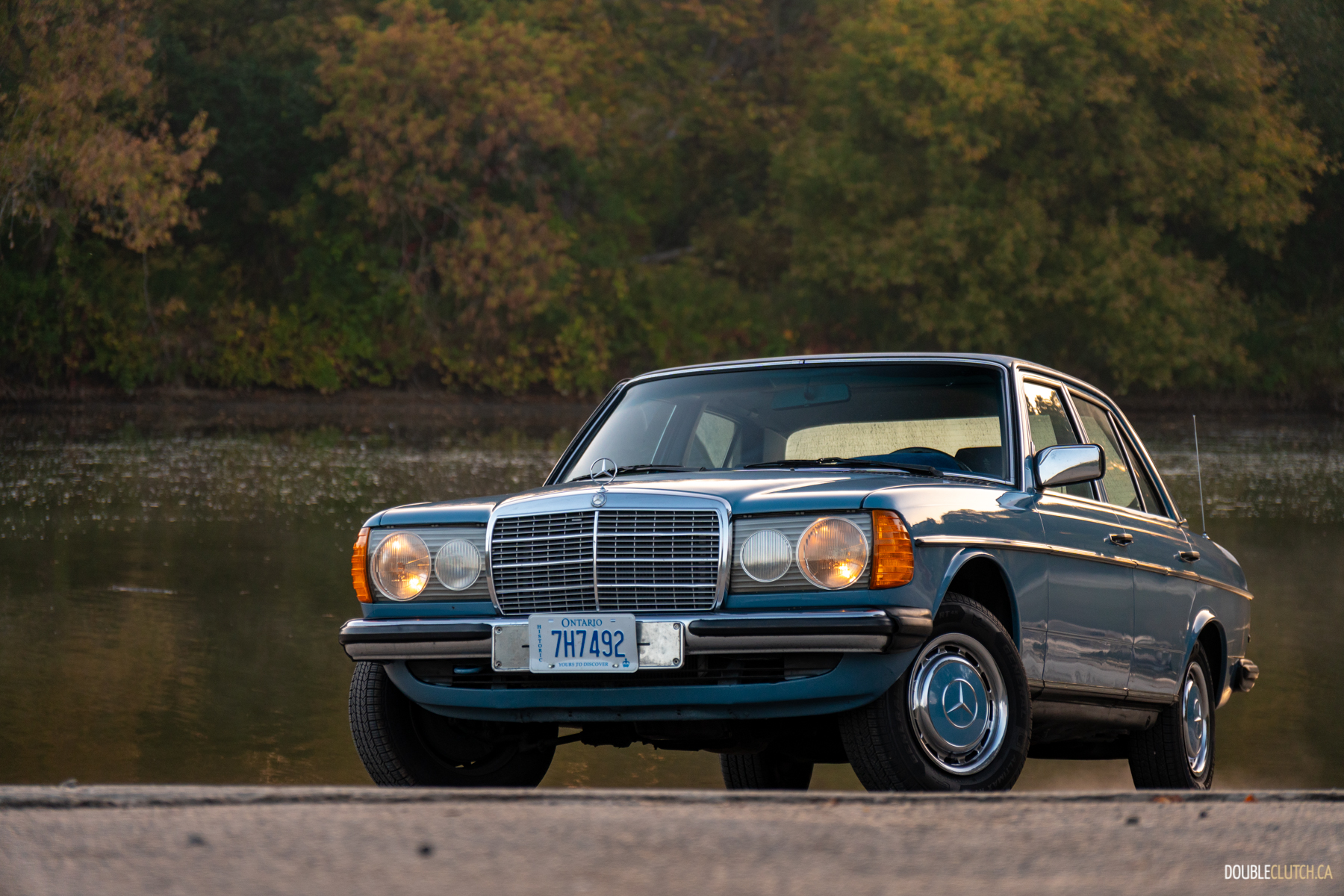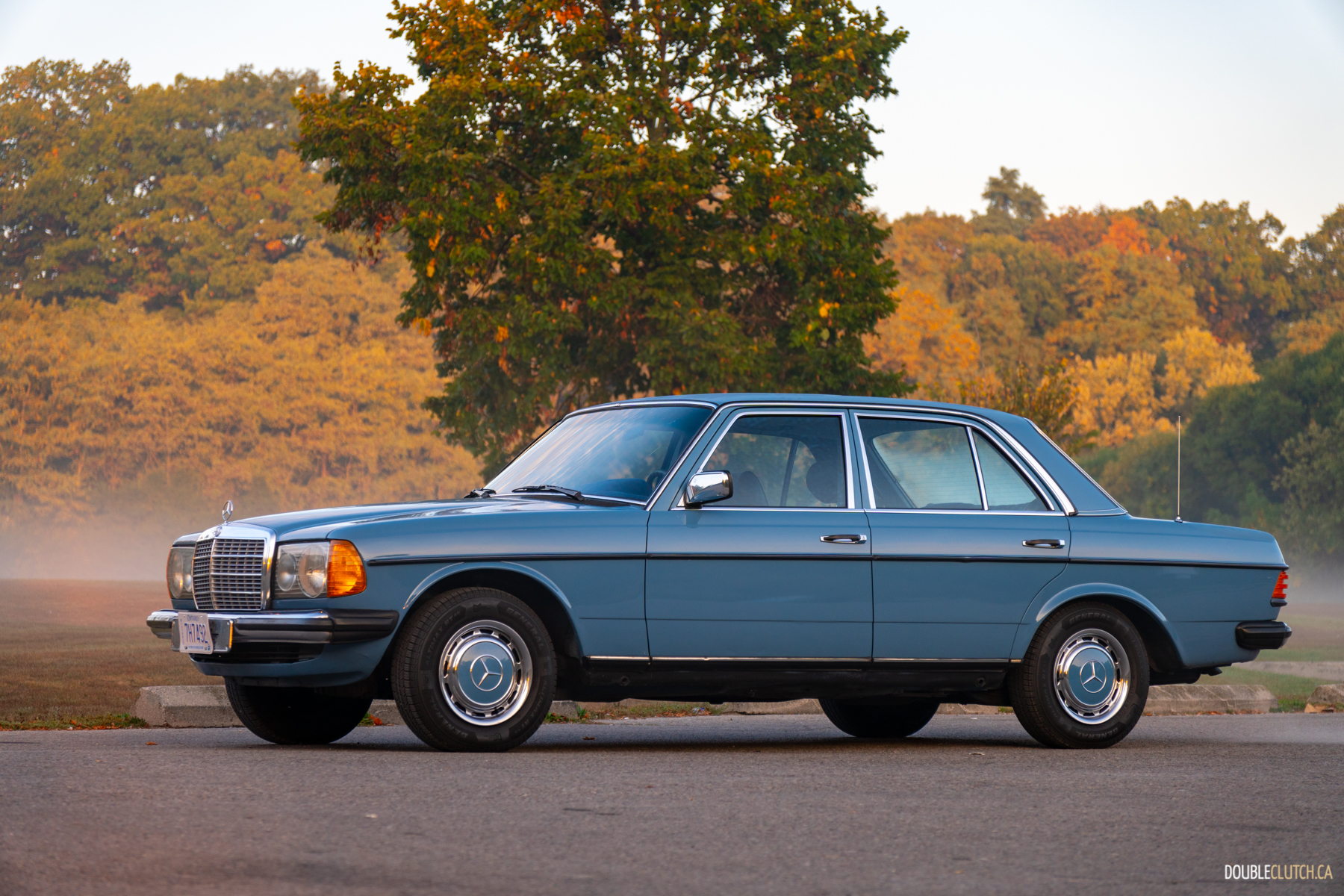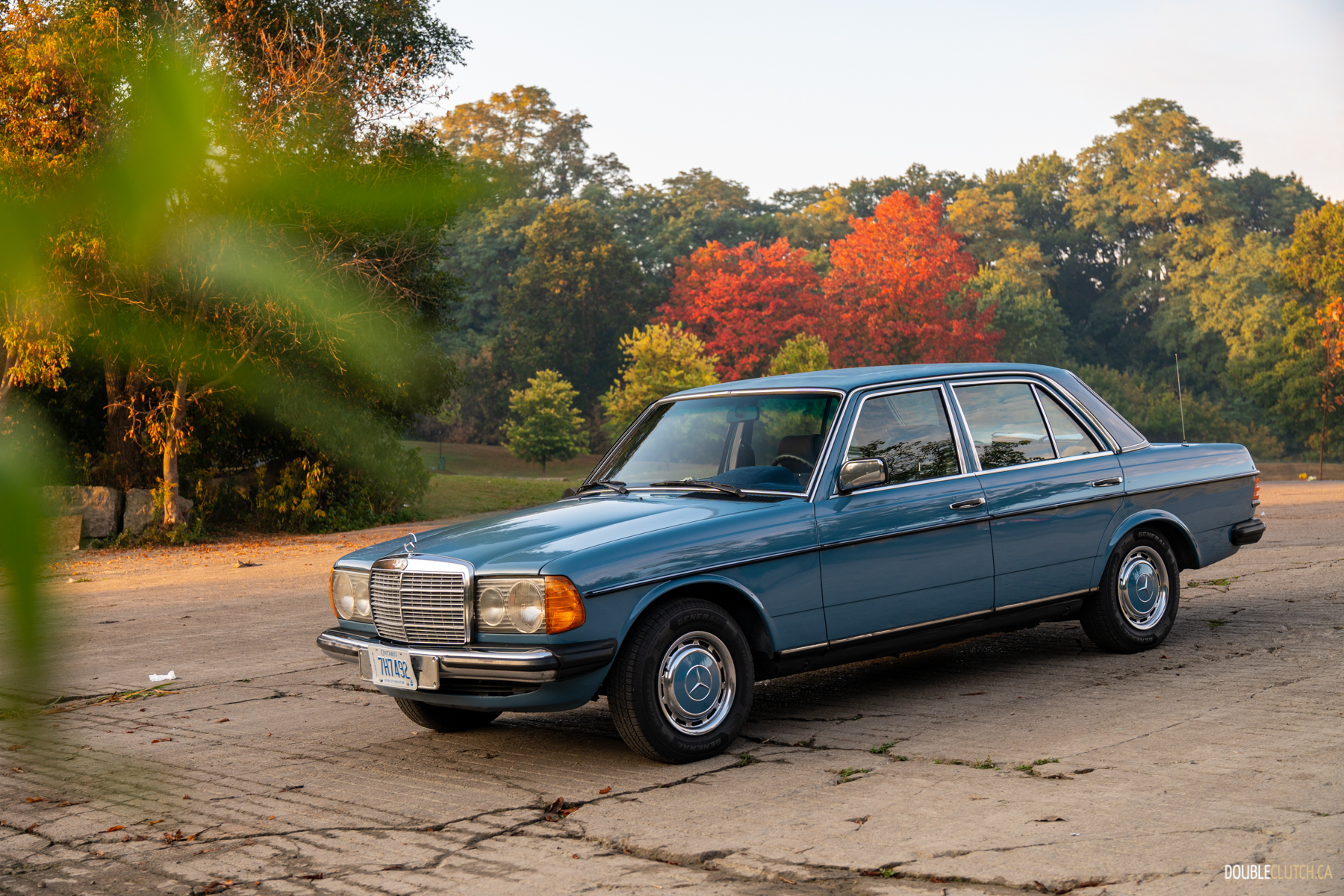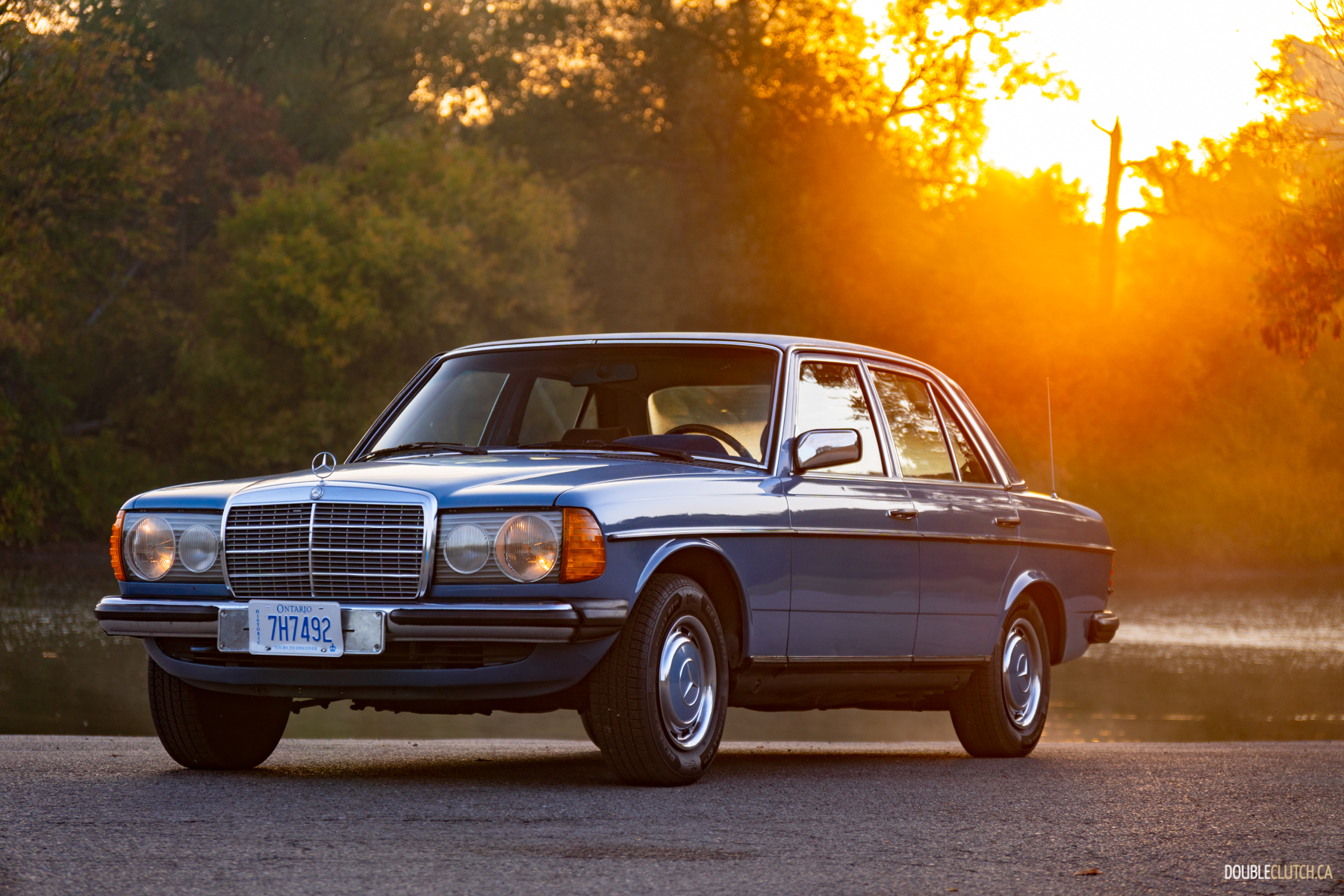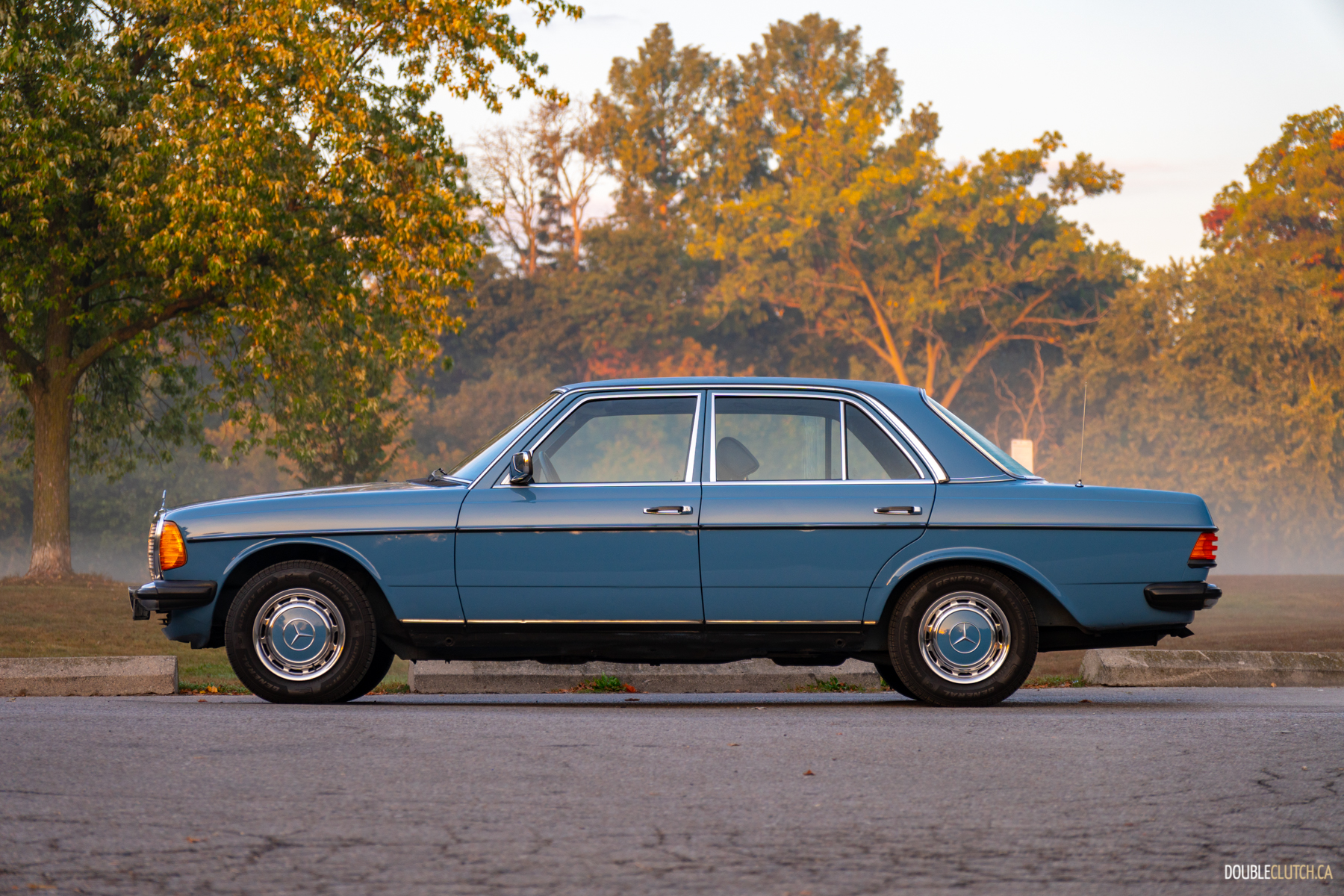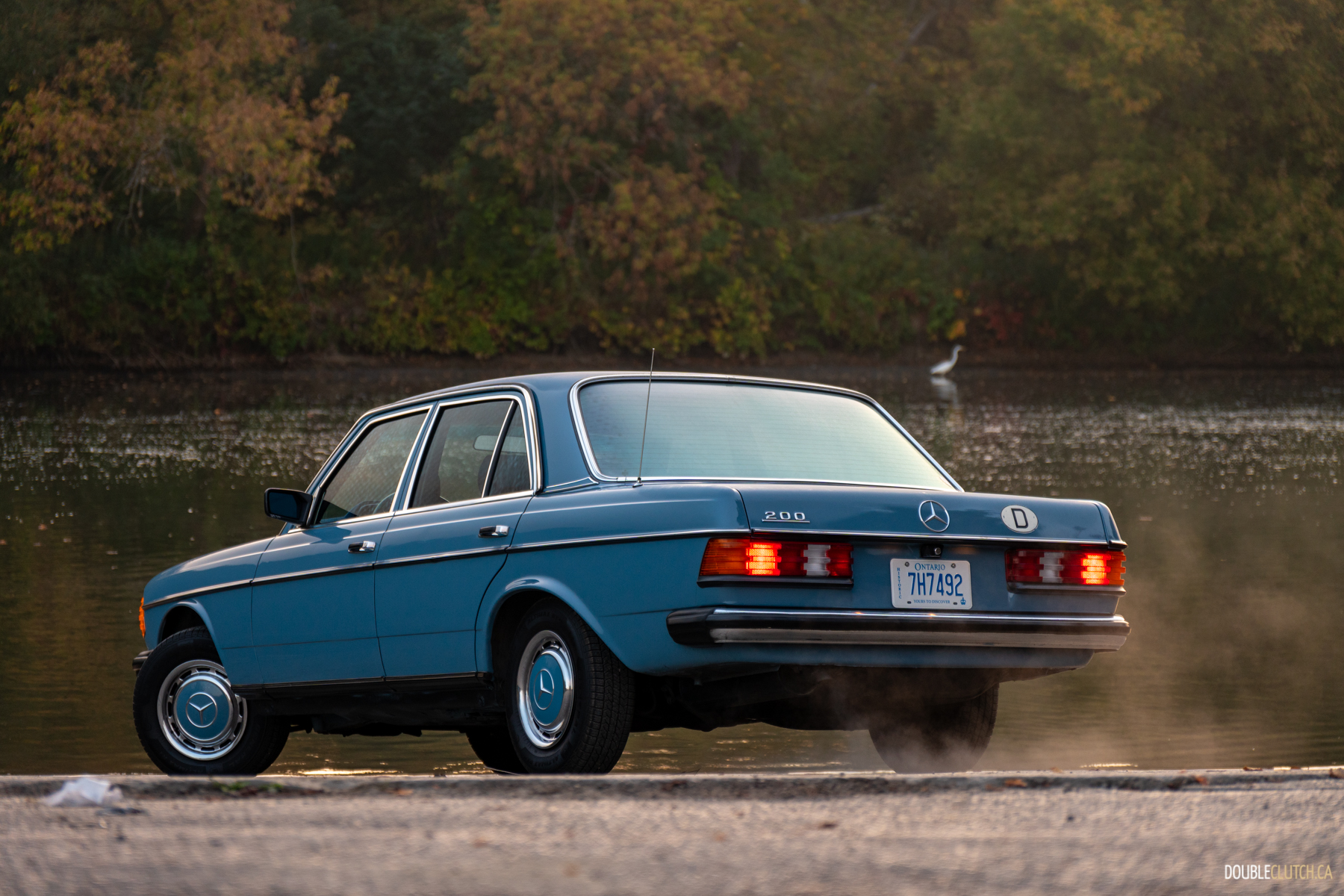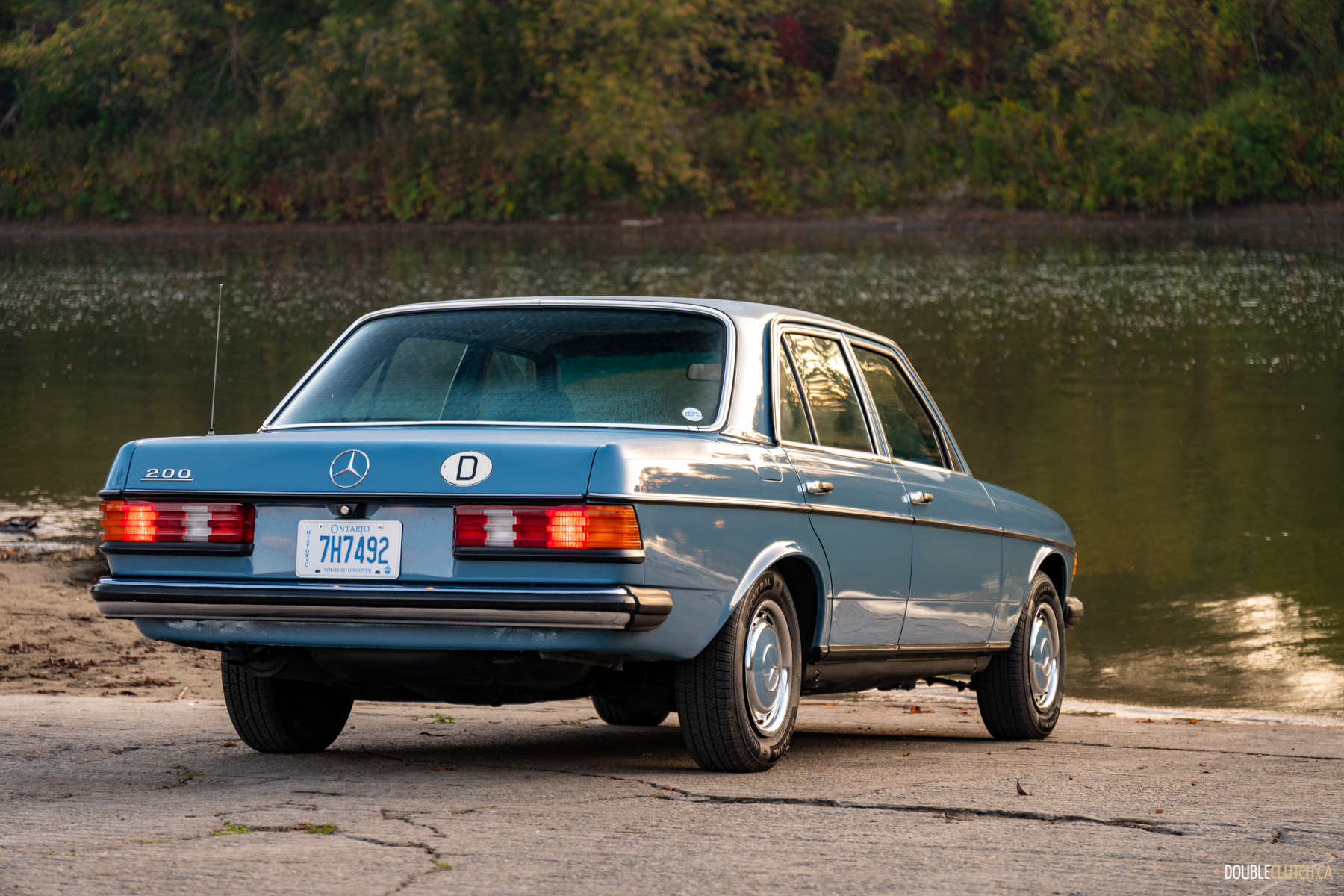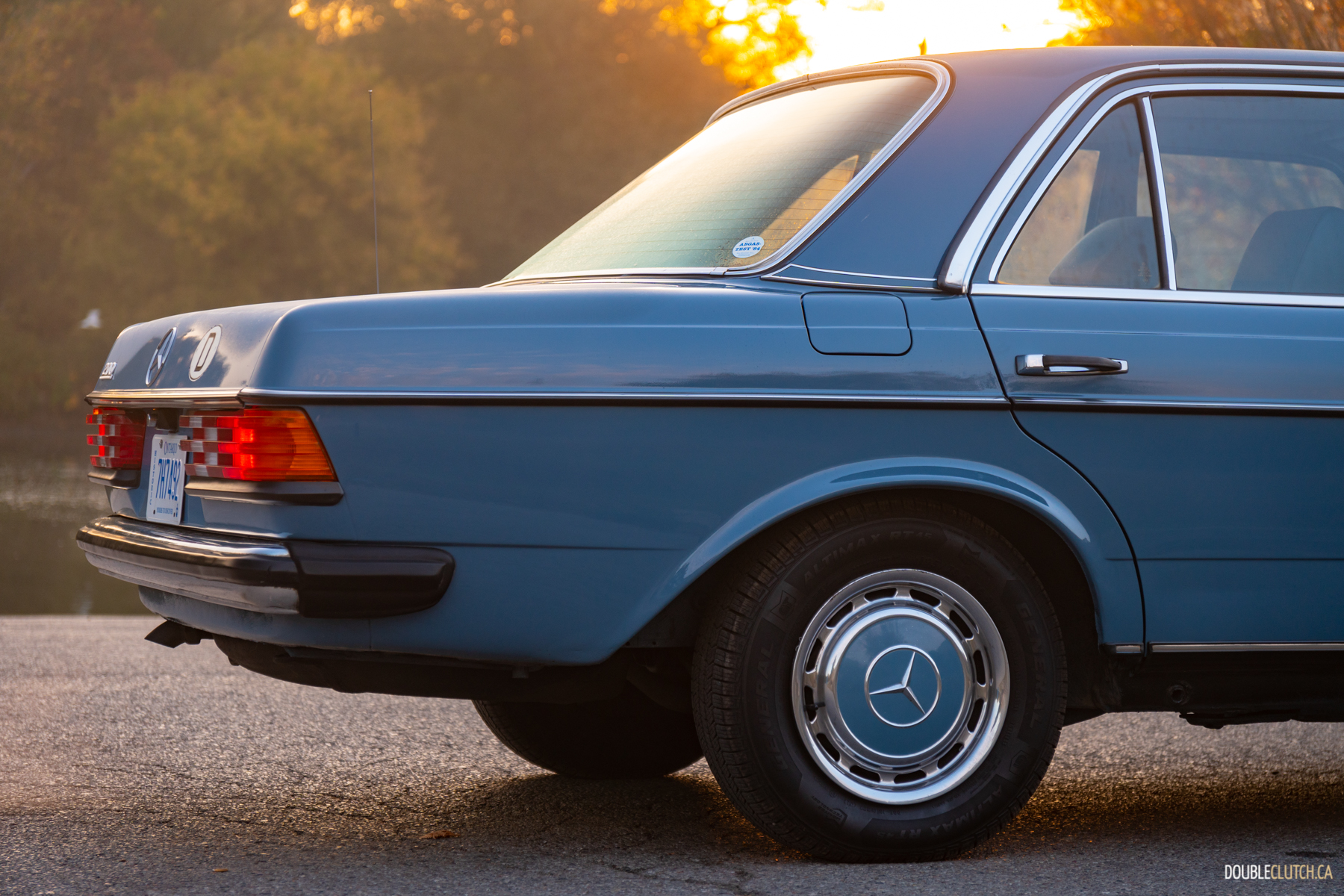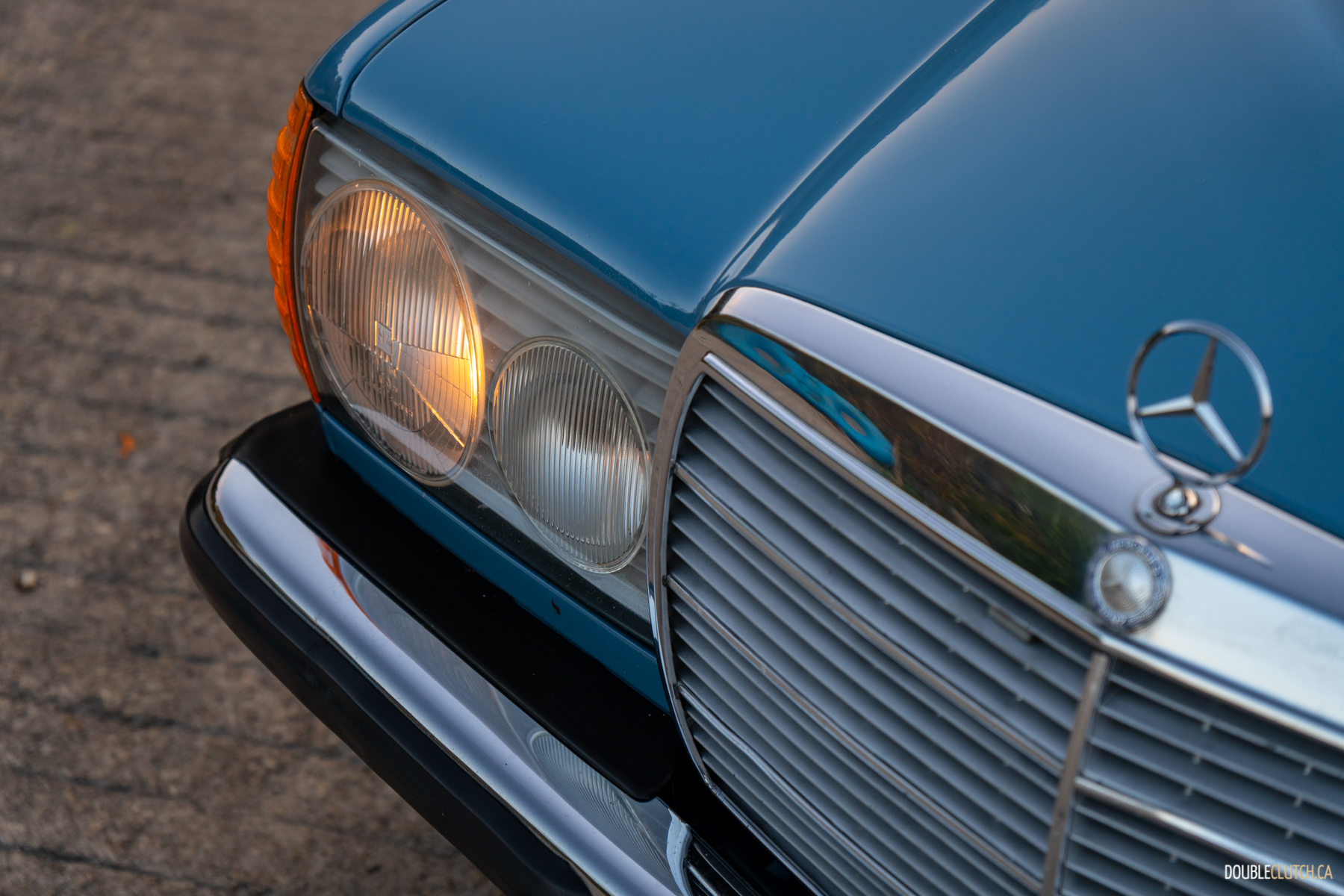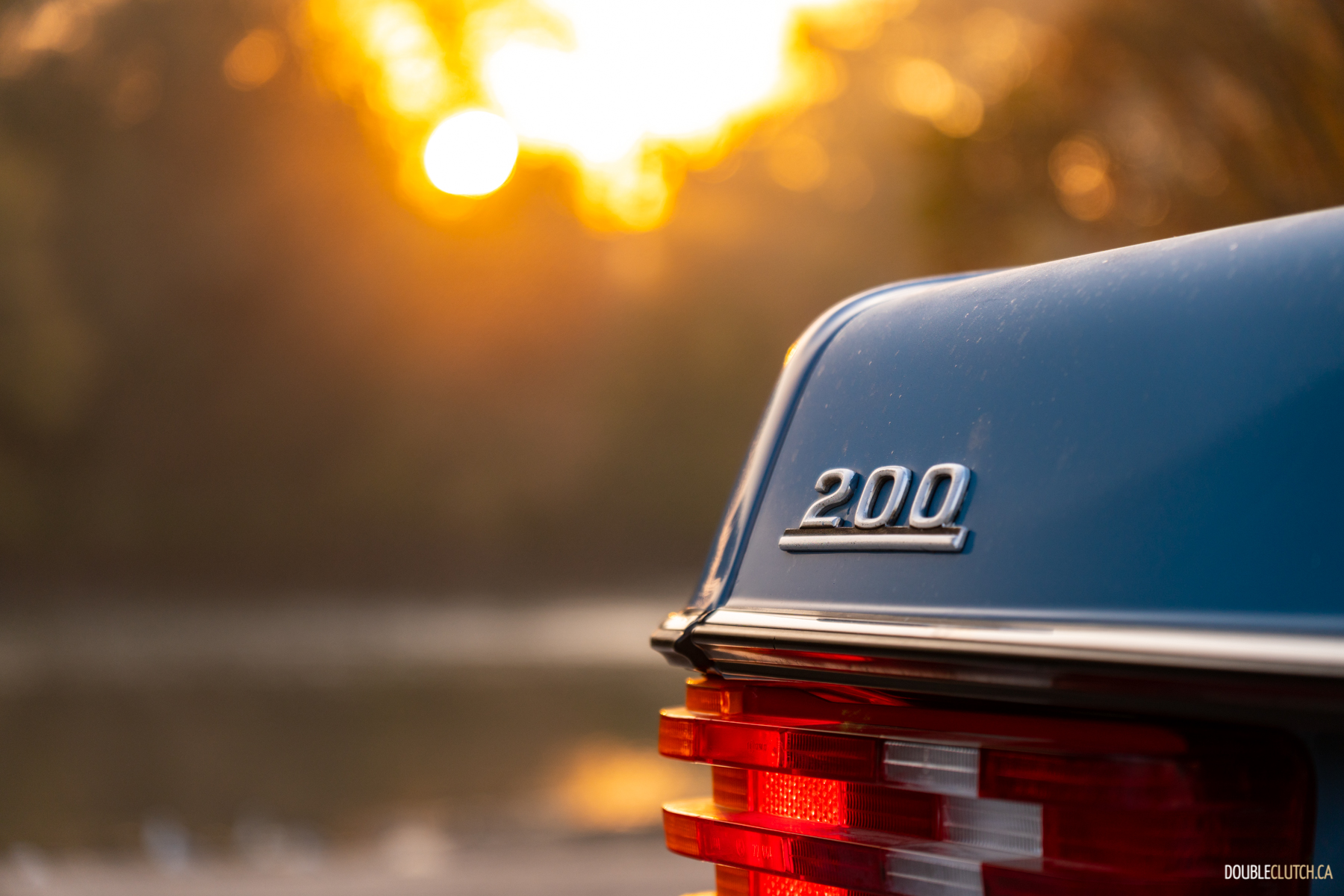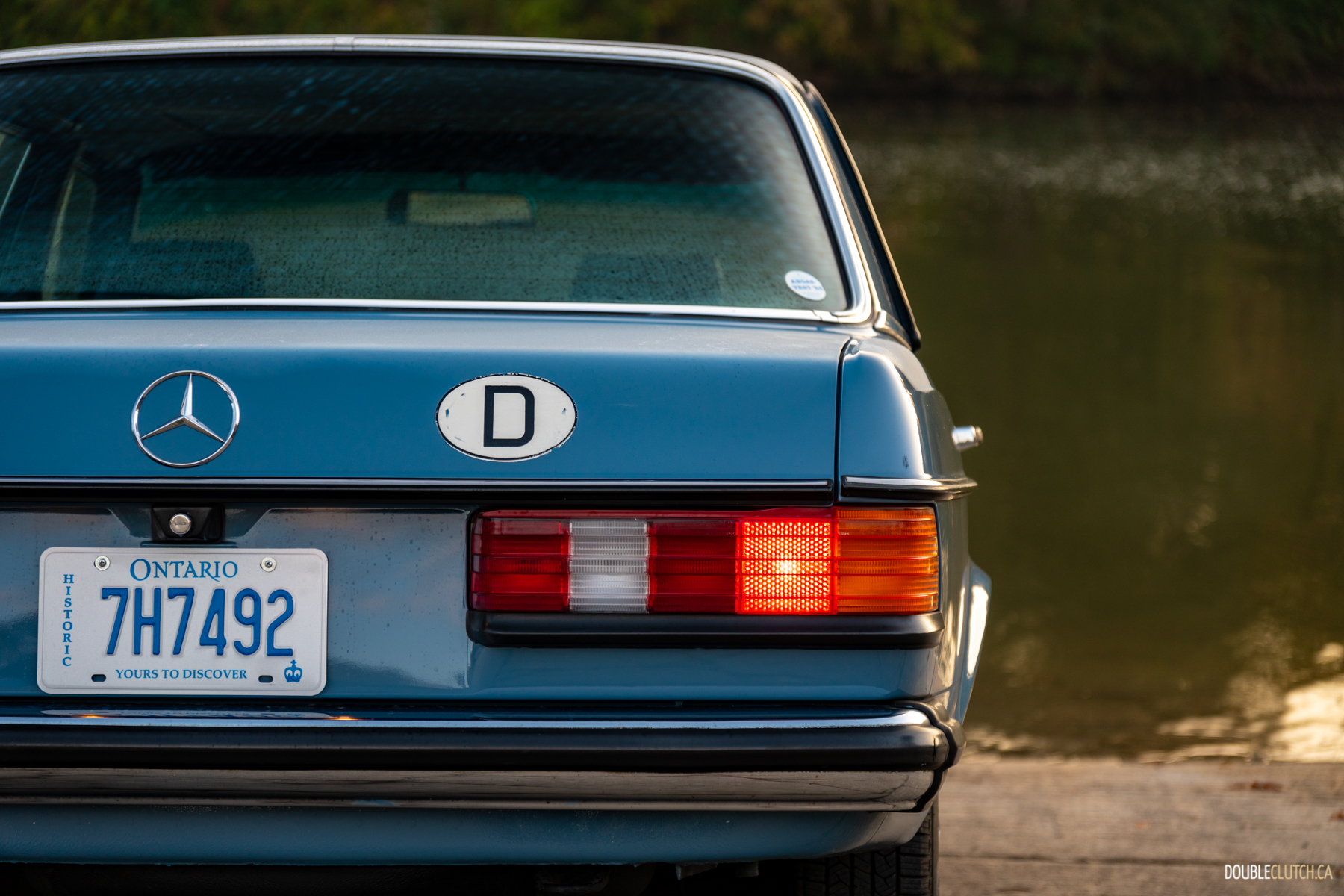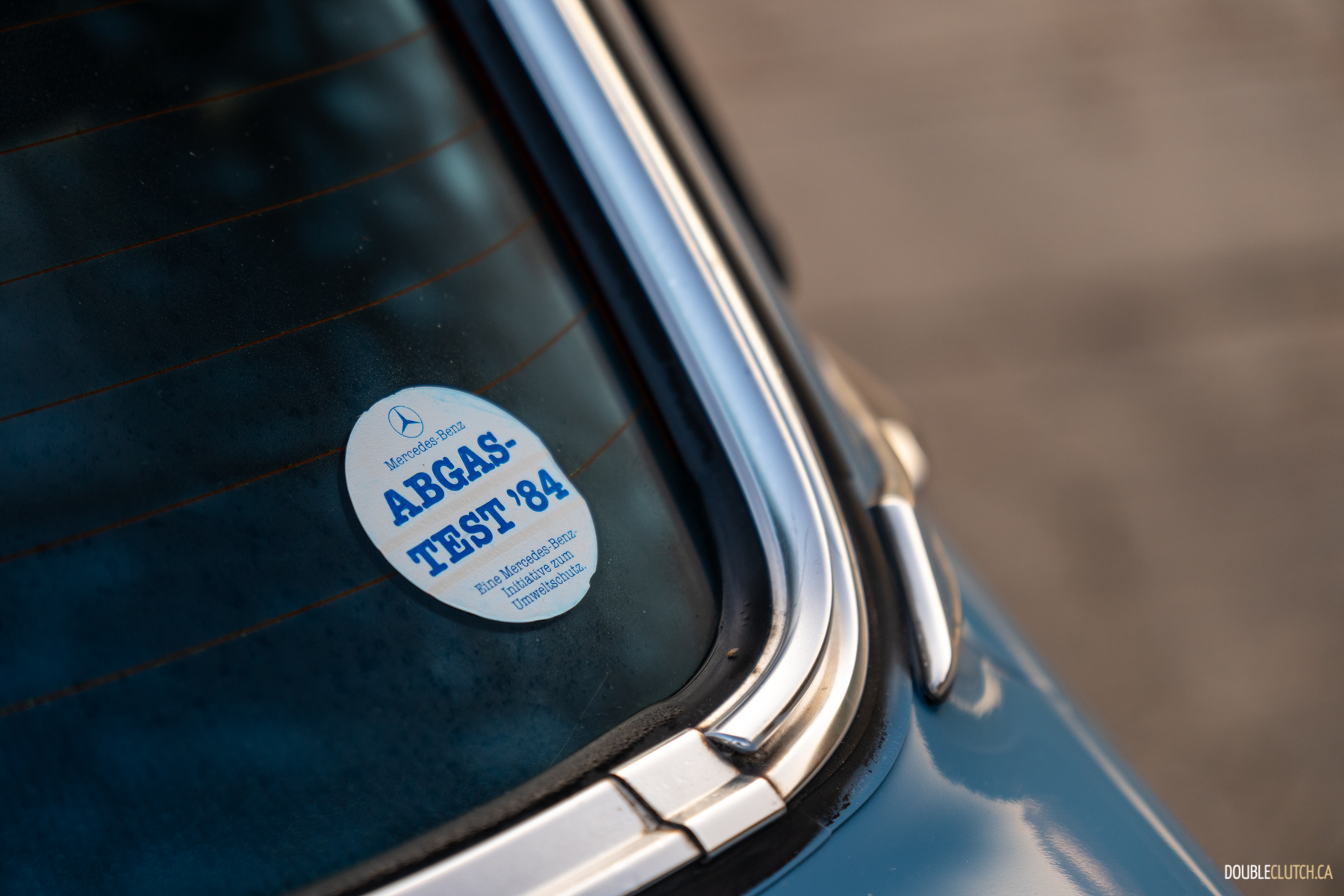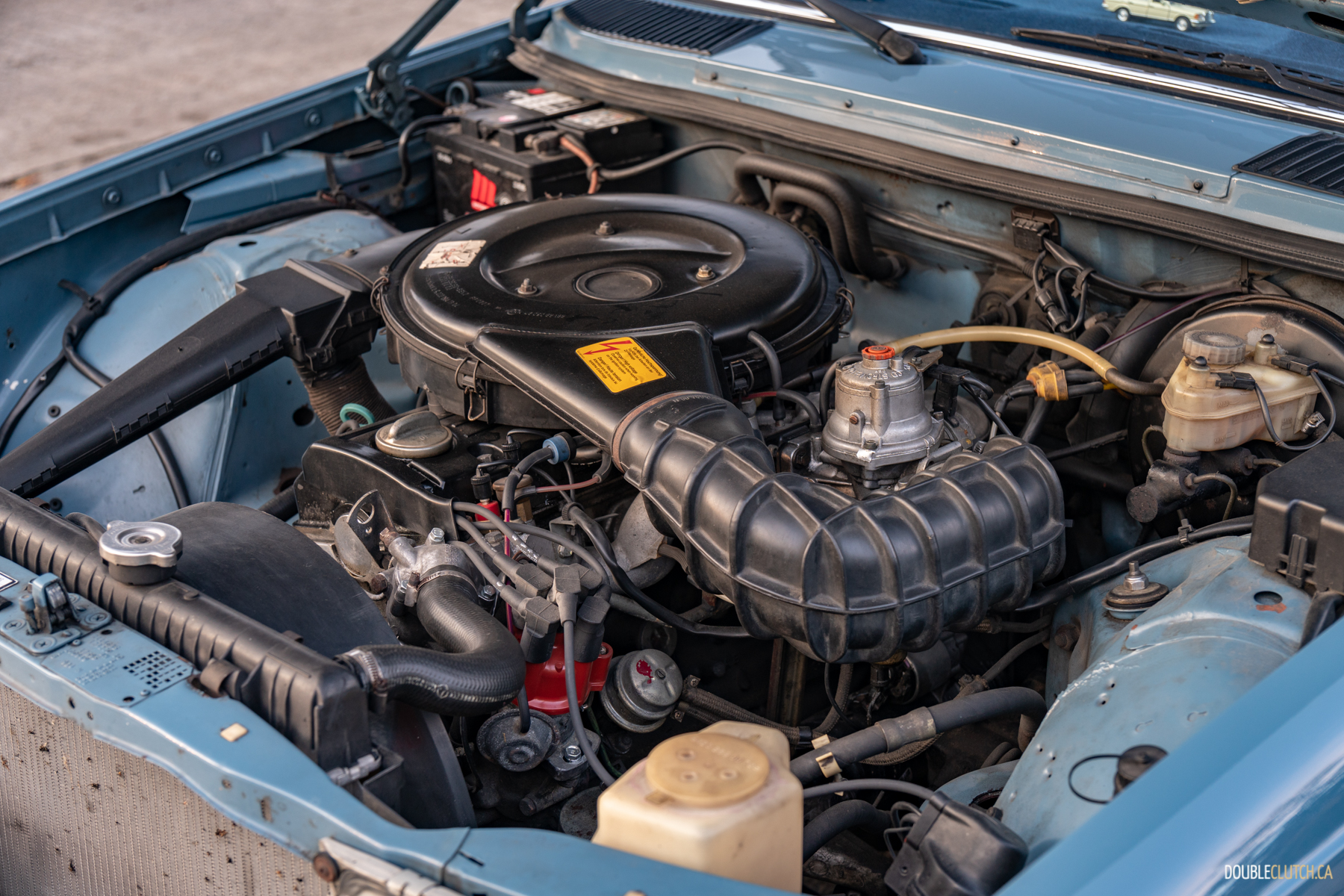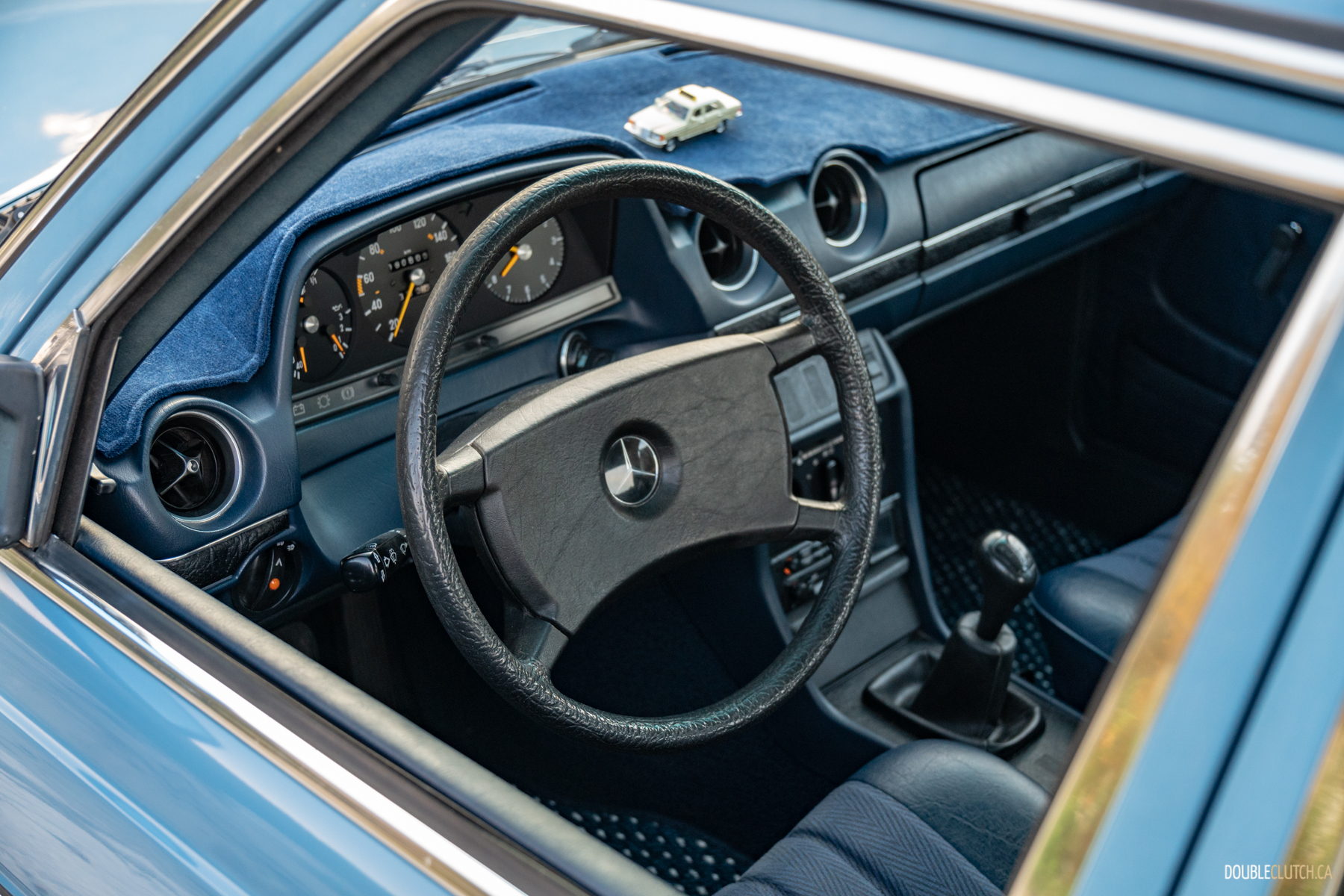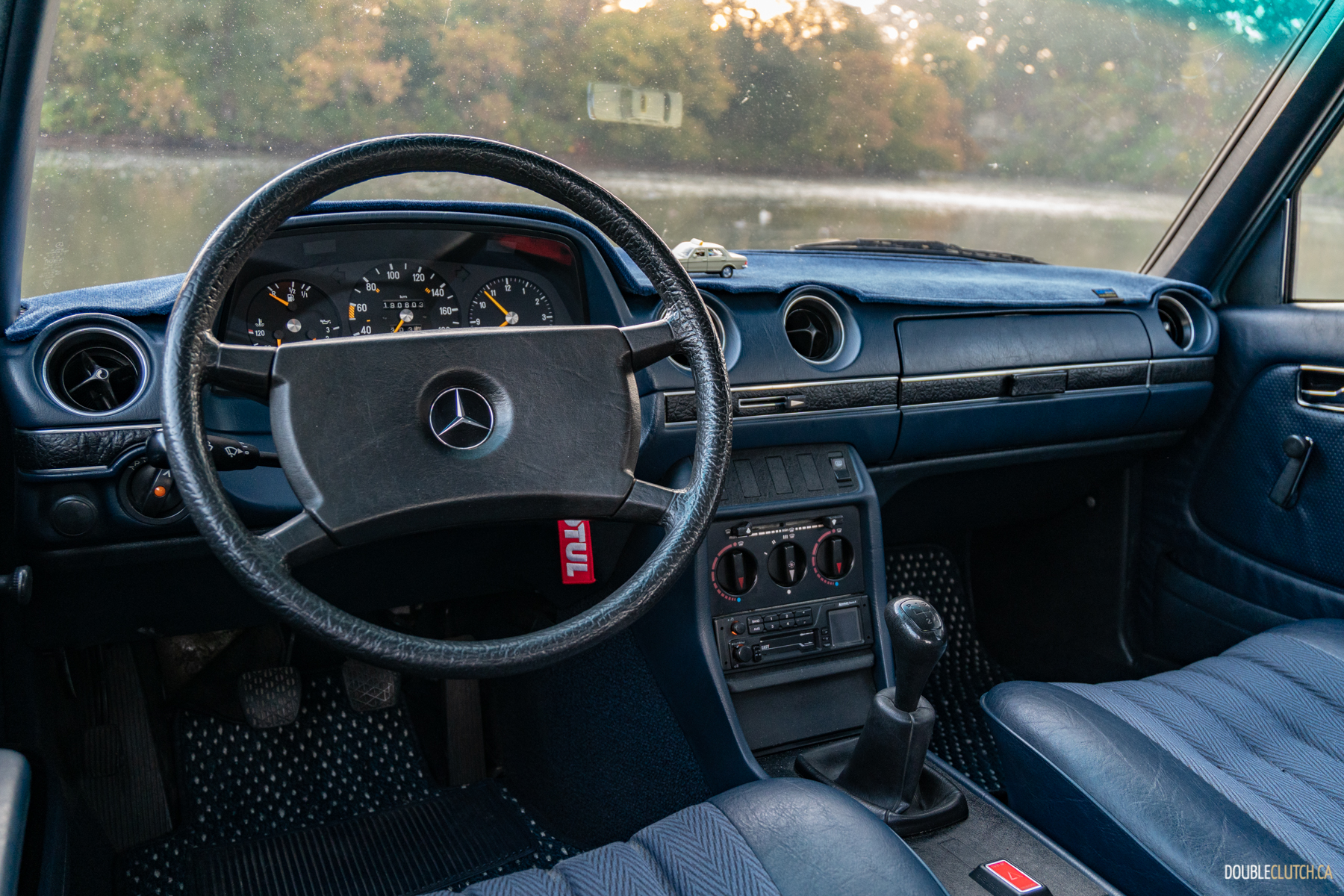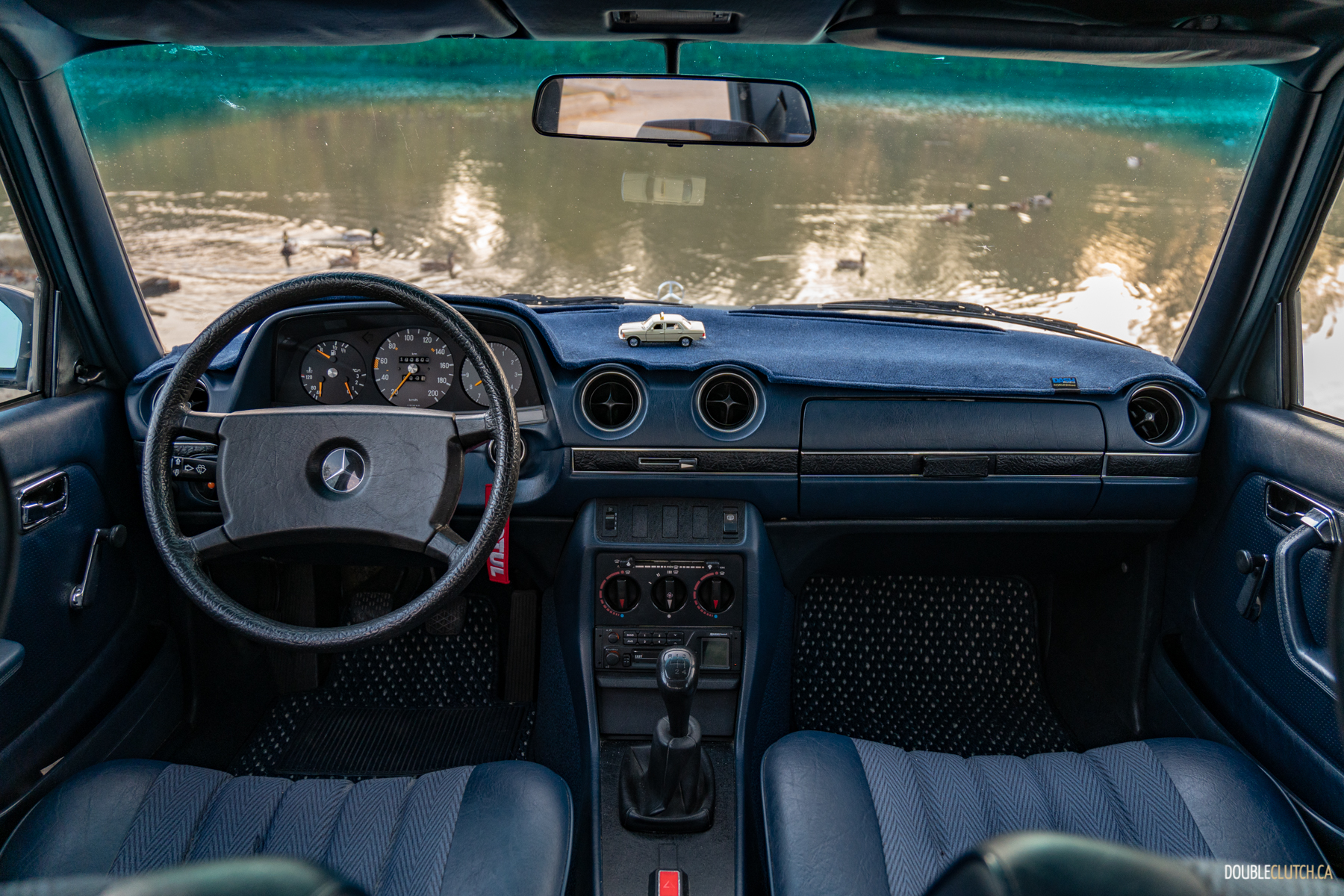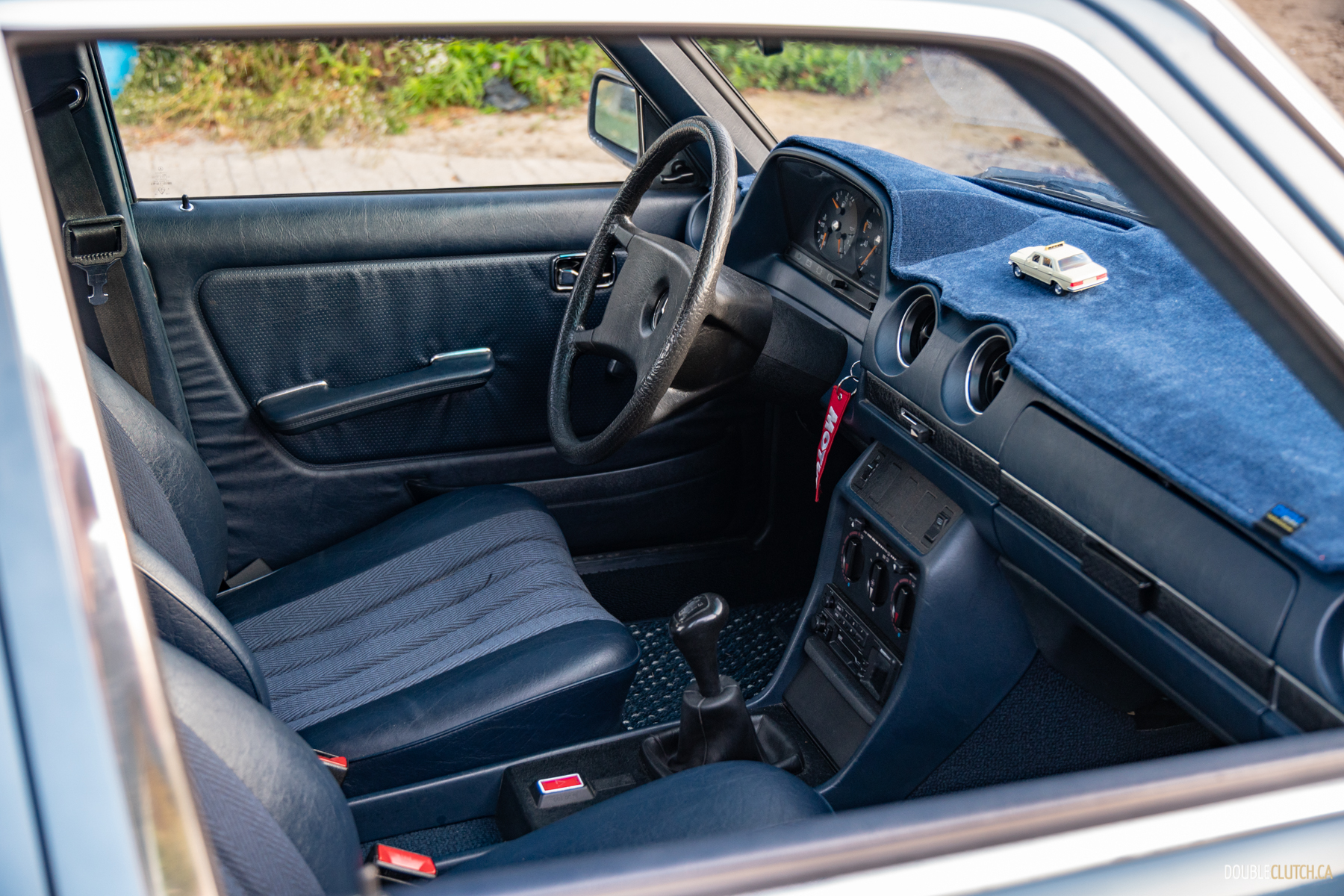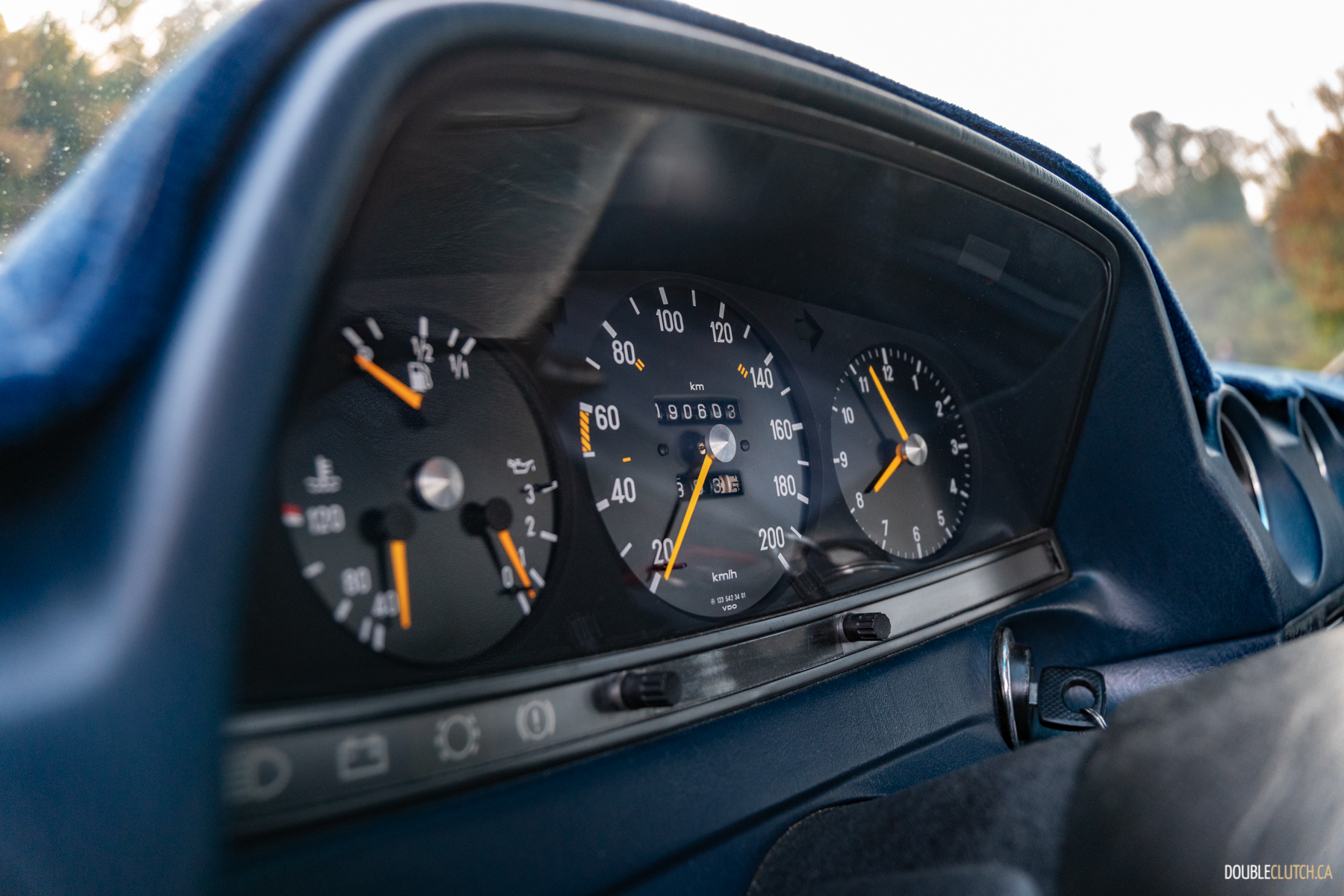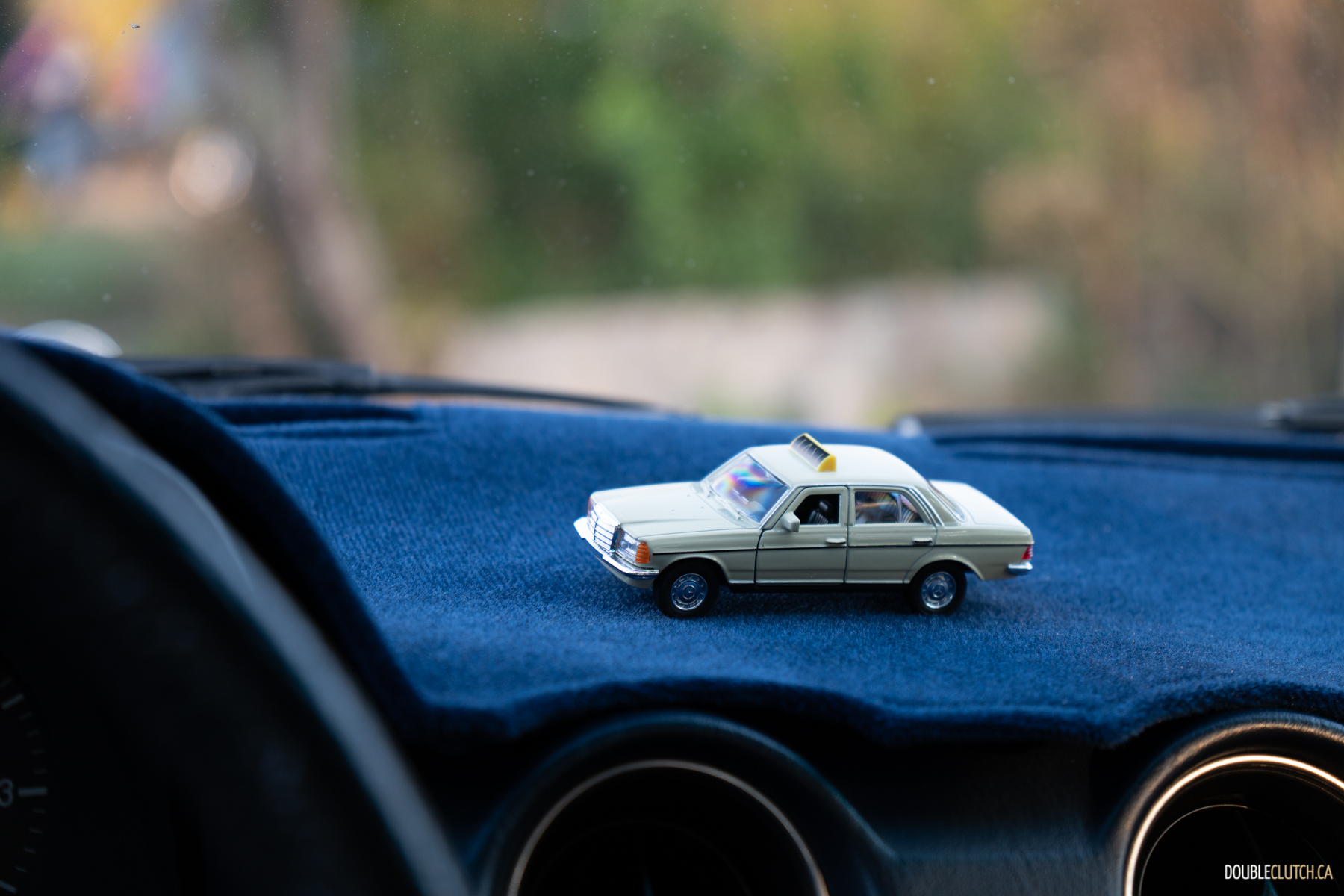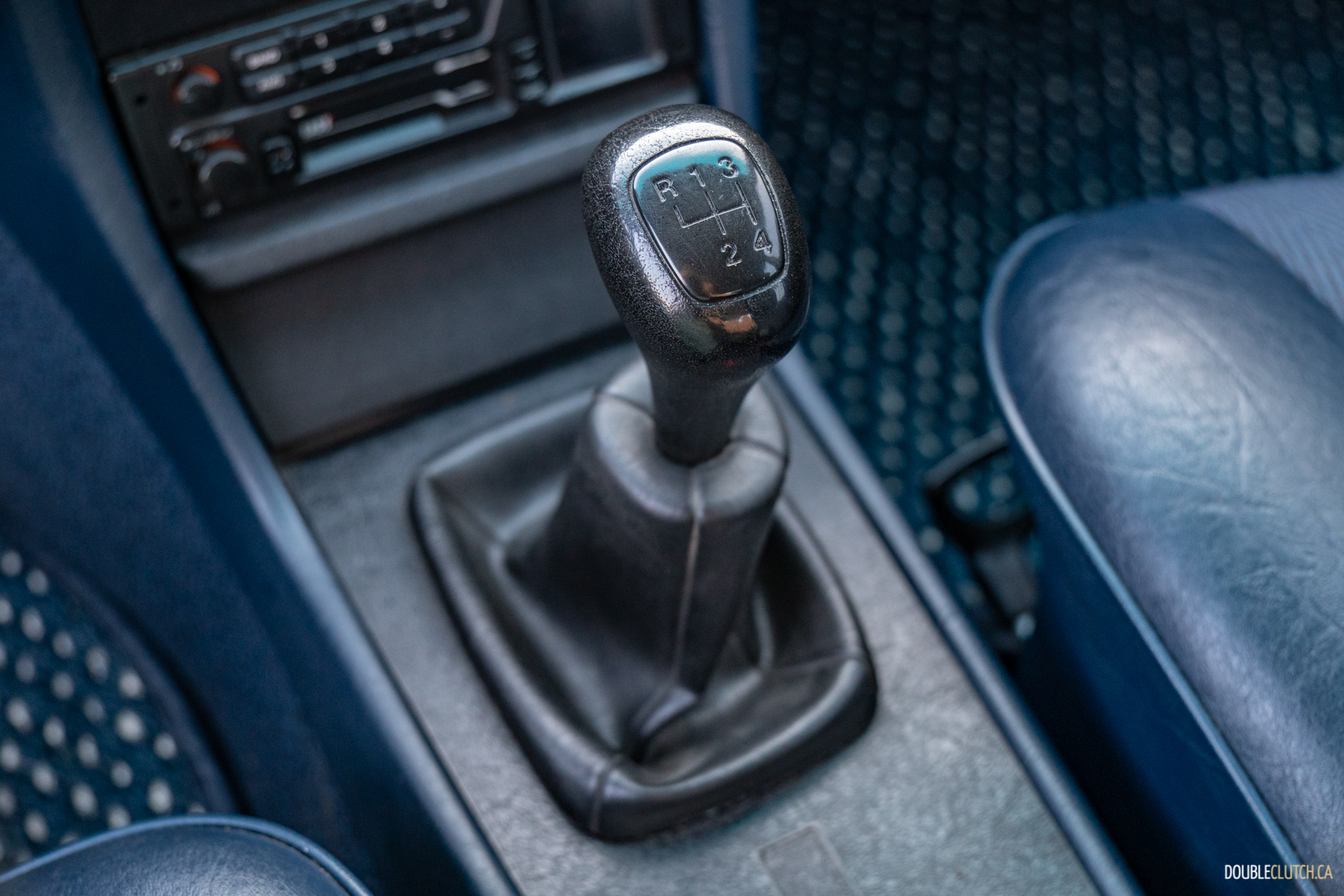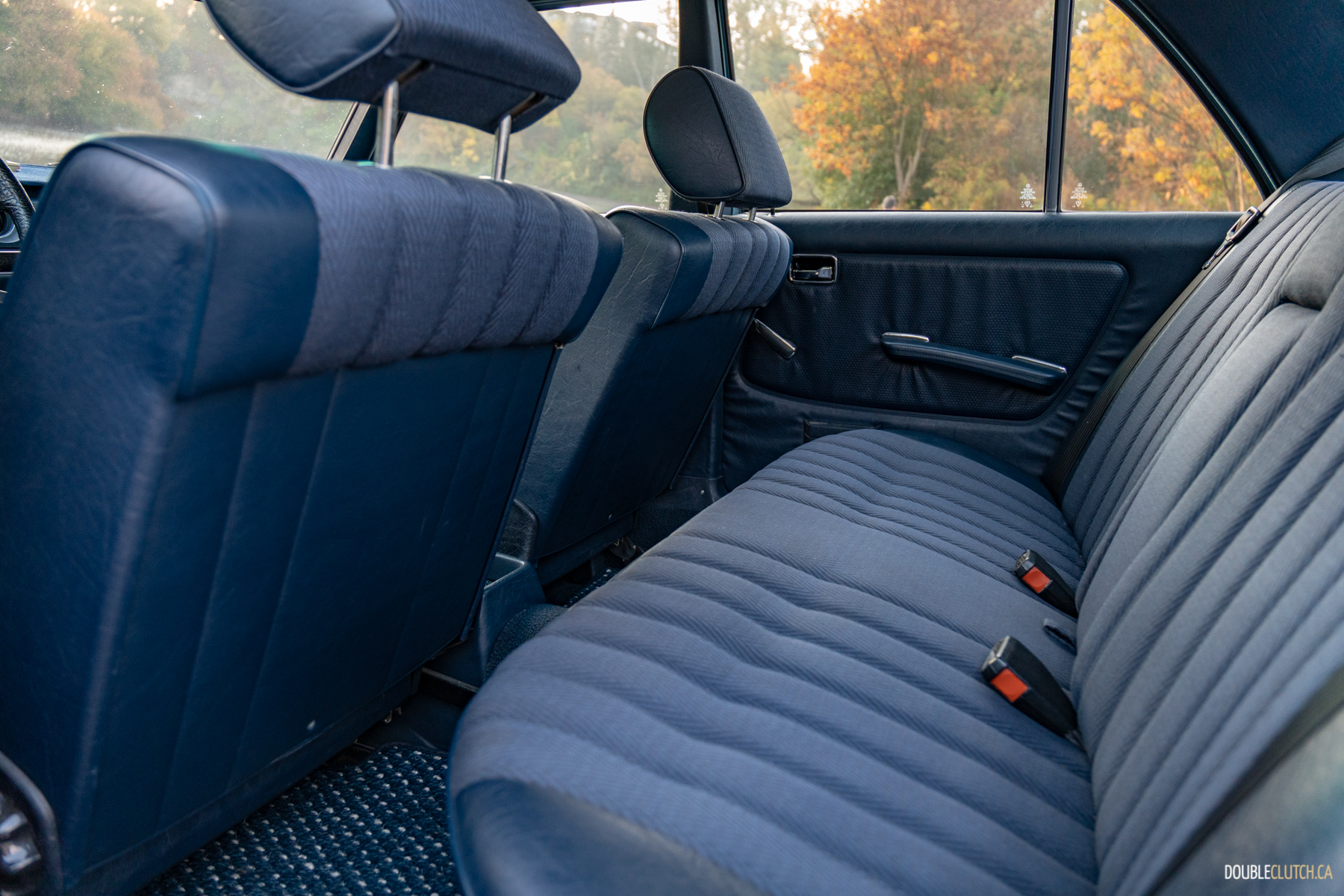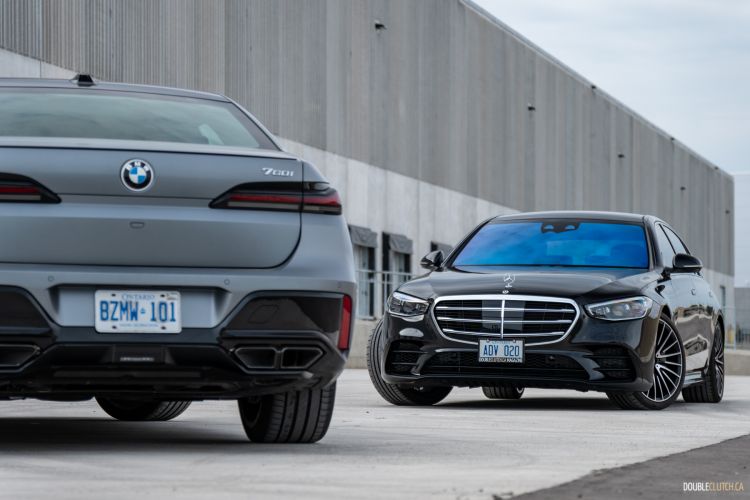I have strong opinions about Mercedes-Benzes. I alluded to this in my review of the EQE 500, which I generally quite liked, but I’m more than a little worried about the direction that they’ve been heading as a brand. Nowhere is this mis-direction more apparent than from behind the wheel of the legendarily overbuilt W123-generation Benzes of the late ’70s and early ’80s, or more specifically, the 1981 Mercedes-Benz 200 I recently enjoyed.
Let’s get something straight — that’s not a typo. It’s not a 240D, or a 280E, or anything else. It’s just 200, and that’s it. Mercedes-Benz nomenclature at the time was simple and logical, just like their cars. The number denoted the engine size, C was for coupes, D was for diesel, E (Einspritzung) translating from German to fuel-injected, S (Sonderklasse) translating to Special Class for their flagship sedans, and SL (Sport-leight) denoted the sports cars. This car, being a 200, implies a two-litre engine and nothing else.
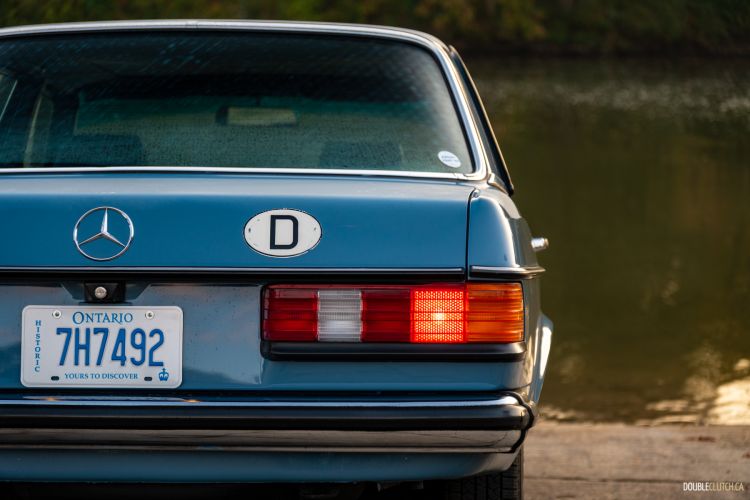
This was the cheapest Mercedes you could buy in 1981, such that Mercedes USA didn’t want it sold here, fearing it might dilute the luxurious image they were cultivating. So, this particular car lived in Germany before being privately imported twenty-odd years ago. It features cloth and vinyl manual seats, manual windows, a manual transmission (a rare sight in a Benz of any vintage), and a small, carbureted gas engine. Its only luxurious frill is the large sunroof, which is also manually operated. It doesn’t even have a passenger side mirror, as that was an option and not technically required for safety back then. It’s a gloriously basic, pleb-spec little economy car, that just happens to be built to the same standard as a six-figure 600 Grosser.
The W123 was an ambitious project for Mercedes, being exceptionally over-built and over-engineered, even by their own lofty standards. Mercedes spent multiple billions in the development and testing of this car, and that’s back when a single billion was an unfathomable sum of money. They drew attention to this, as it’s one of the first cars to have its design and development documented and publicized. The public knew it was something special before the first one rolled out off the assembly line, and it stayed on a waitlist for its entire production run of more than two and a half million cars.
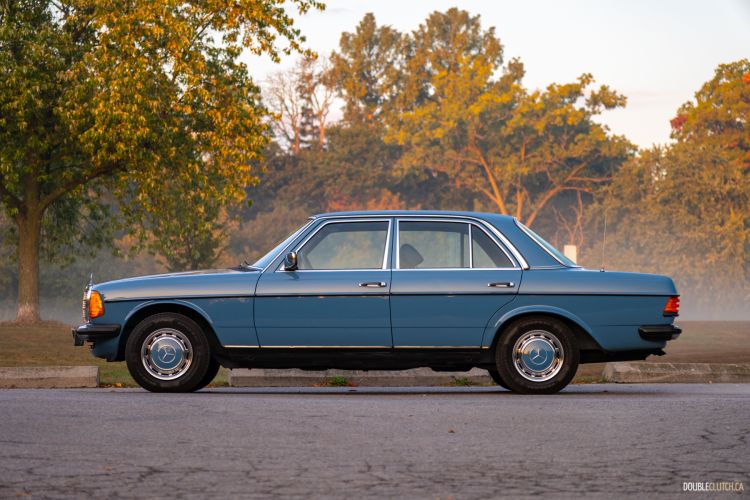
This was from an era when cars weren’t necessarily built to last. Long-term quality and reliability wasn’t really a consideration; a car was expected to be dead before its five digit odometer rolled over. Ergonomics that we take for granted now weren’t really a thing yet, either. You could walk into a car dealership, and give a nice man in a cheap suit thousands of dollars for a brand new car, you’d leave with an uncomfortable, unreliable, and unsafe piece of garbage that would write itself off within four years. A Mercedes — even this super basic Mercedes — was different.
The luxury that you were paying for with a Mercedes wasn’t necessarily wood trim or leather or powered gizmos or a mighty engine (although Mercedes would gladly sell you all of that), it was a car that looked, felt, and drove great, and could be expected to keep it up for many years. These were not cheap cars by any stretch, but they quickly gained a reputation for being incredibly affordable, because they just kept working with basic maintenance. They were a favourite of taxi drivers, who could comfortably roll over their six-digit odometer before shipping them to Africa, where they can still be found at taxi stands there to this day.
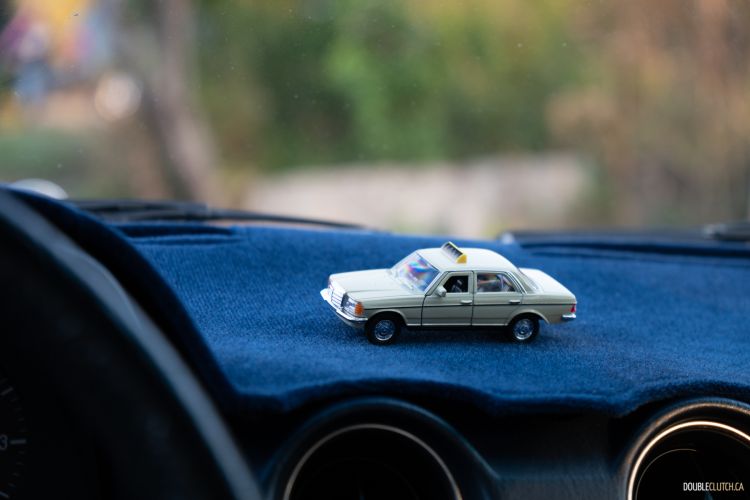
The W123 was one of the first Benzes designed specifically to look “friendly,” and this ethos succeeds handsomely, perhaps even more so now than before. It’s such a rare thing that a car can be so distinct, pretty, charming, elegant, and practical — and be all of this without looking even slightly pretentious. It’s delightful and approachable, and I mean that literally. I couldn’t go anywhere in this car without being approached by curious onlookers.
And go anywhere, I did. Full disclosure: I used to own this car. I sold a perfectly adequate modern BMW for it, and had approximately zero regrets about swapping a good car with heated seats and fuel injection, for this vintage economy car and thrusting it into daily driver duty. I had no reservations about taking it to Costco or on long trips out of town. It was meant to be used, and use it I did. I only sold it to finance another, sillier car, and I probably wouldn’t have let go of it if it didn’t go to a close friend of mine.
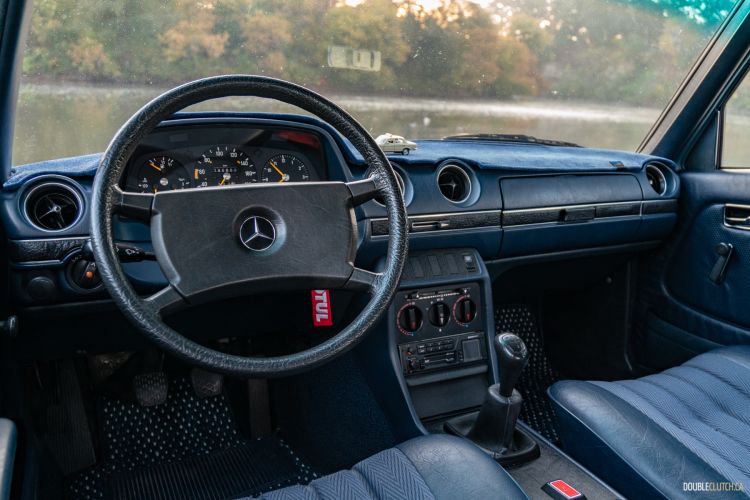
It’s been interesting to re-visit, primarily because I let it go when I was still pretty new to reviewing cars and hadn’t yet driven almost everything under the sun. I (obviously) knew it was a nice car when I owned it, but in coming back to it one year and many cars later, I have a new appreciation for just how nice it is. It’s impeccably well-crafted. It’s a masterstroke in pragmatic, thoughtful engineering, and the cabin is a class-act in cohesive and quality materials. This isn’t a nice place to sit for an old car; this is a nice place to sit, period.
Sure, it doesn’t have Android Auto or a tachometer, and yes, it uses about the same amount of fuel as the last couple five-million-horsepower BMWs I reviewed, but it has the fundamentals that my colleagues and I look for absolutely nailed, despite lacking some 40 years of R&D over what we’re reviewing these days. To that end, the cars Mercedes is building right now aren’t appreciably quieter, smoother, more satisfying to drive, or easier to live with than this ancient jalopy. Faster and more frilly, of course, but better? I don’t think so.
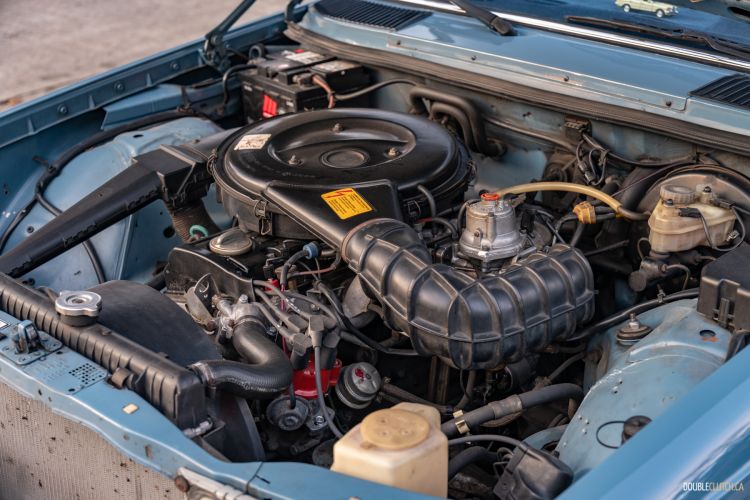
Its humble 102-horsepower four-banger fires to life instantly and settles into a smooth idle. At low speeds, it’s almost imperceptibly quiet and has a perfectly linear torque curve, building into a modest mechanical grunt with just barely enough power on tap to merge onto a highway (mostly) confidently. Its four-speed manual gearbox has zero cables or rubber bushings in its shift linkage, and it’s remarkably tight, light, and slick, with period-characteristic long throws. Clutch take-up is similarly light and easy, with a gradual bite and intuitive feedback; this would be an unironically amazing car to learn how to drive manual.
The only thing about this car that feels old is its steering; it’s light and easy-breezy, but the massive thin-rimmed steering wheel has a definite boat-tiller vibe. While it’s not numb, it’s not exactly precise, either — Mercedes specifies up to one inch of play on-centre. It’s very relaxed on the highway, and tightens up nicely under load, making for confident placement in a corner. Even the brakes feel tight and responsive, very uncharacteristic of a car this vintage.

It’s not fun per se, but it’s satisfying. It strikes an immaculate balance of being communicative enough to be enjoyable, and so easy and intuitive that you can’t help but be pleased. Despite being so very manual, it’s not at all laborious to operate, with an incredibly plush ride that even the most sophisticated modern active air suspensions struggle to match, and impressively well-hushed wind and road noise. The lack of air conditioning isn’t a total deal breaker, as air moves through the cabin so efficiently that you can make do on all but the muggiest of days without having to open the windows. Even the missing passenger mirror (or modern backup camera) isn’t missed, as the visibility, with its thin pillars and low waistline, is a revelation.
That’s what the W123 is: a revelation. It’s a revelation in what Mercedes used to stand for, and in what excellence used to be. The root word of excellence is excel, defined as being able to be distinguished by superiority. This Mercedes, despite lacking itemizable creature comforts, was straight-up better than just about anything else than anything else available at the time, and remains a delightful and relevant car, with refinement levels comparable to anything modern, despite the decades weighing it down.
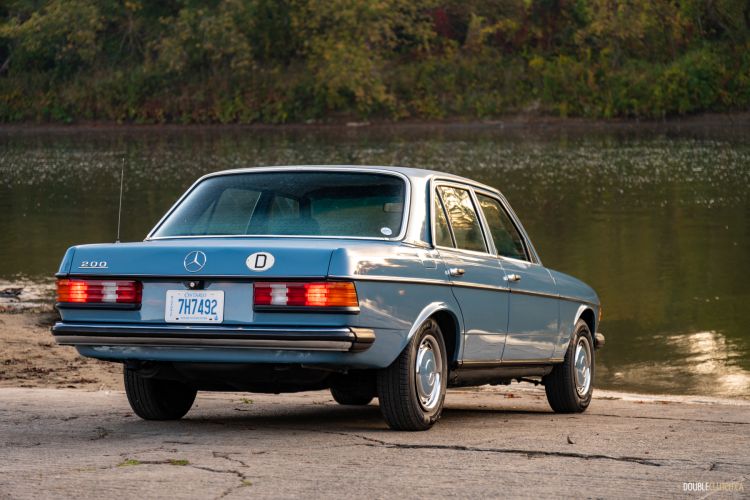
Bruno Sacco, the talented young designer that finalized this marvellous shape early in his career and went on to pen some of the most iconic Benzes to ever be stamped into reality, had an ethos called horizontal homogeneity: that every Mercedes big and small should look like they’re cut from the came cloth, which persists to this day. He had another idea called vertical affinity, which dictated that a car should not be rendered obsolete by its successors.
I think that idea, that carefully considered timelessness of design, is a lost art that this 1981 Mercedes-Benz 200 knocks out of the park. Its charming style, effortless driving demeanor, and stalwart construction makes me skeptical that anything adorned with a three-pointed star today will be relevant after a dozen and change trips around the sun like this little blue gem. I’m glad Mercedes built these well enough so that we may all still learn from them what a car, and, more to the point, what a Benz is supposed to be.
See Also
2023 Mercedes-Benz EQE 500 4MATIC
This replica Hong Kong taxi took me home faster than any flight

